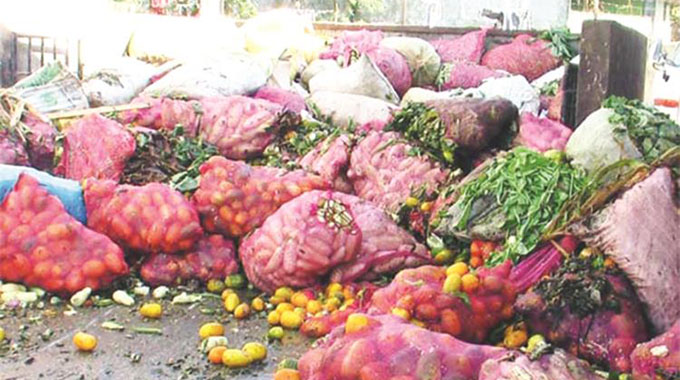Post-harvest losses under the microscope

Beaven Dhliwayo Features Writer
Southern Africa Media in Agriculture Climate and Environment Trust (SAMACET) will host a summit next month which will focus on how the SADC region can reduce post-harvest losses to enhance food security.
Founder and coordinator of SAMACET Josiah Dimbo told The Herald recently that the summit will be held in South Africa from September 26 to 27 in conjunction with Agri-Quest Africa Network, as well as other agriculture and environmental-affiliated organisations.
The summit will be held under the theme “ Post-Harvest Loss Reduction and Agro-Processing in the SADC: Current Developments and Trends”.
“The summit is meant to address a number of issues related to good agricultural practices and safe post-harvest food storage and processing measures that will help improve SADC’s food security,” Dimbo said.
“Experts drawn from various SADC member states will also explore strategies to improve marketing of finished agro- products and environmental-friendly measures that will preserve the environment from further degradation.”
In addition, Dimbo said, the summit will aim to find strategies to promote food nutrition, improved livelihoods and job creation in the post-production sector value chain.
Reducing post-harvest losses can help increase food availability and improve access to food, nutritional quality, food safety and farmers’ incomes.
Most SADC countries are still grappling with post-harvest losses, leading to food and nutrition insecurity.
According to research findings by the UZ Department of Soil Science and Agricultural Engineering, Zimbabwe has an average maize post-harvest loss of about 18,5 percent, roughly worth about $259 per tonne while for sorghum, the figure is pegged at 12,5 percent which translates to a loss of $175 per tonne.
The post-harvest losses are mainly due to destruction during storage by insects and pests.
The challenge of post-harvest losses plays out in all regional countries.
Post-harvest management is closely related to United Nations Sustainable Development Goal of ending hunger by 2030.
“If you look closely at the Zimbabwe scenario, most fresh farm produce like your vegetables end up being garbage at Mbare Musika,” said Dimbo.
“The summit is of paramount importance as it is aimed at helping SADC countries to maximise on their agricultural products through adopting farming methods that produces high quality produce.
“Different stakeholders in the agricultural sector should therefore embrace the 2019 SADC post-harvest and agro-processing summit as the way to go in ensuring the region is food secure.”
The two-day summit will also impart knowledge to farmers on good agricultural practices — mixed crop farming, disease control mechanisms and post-harvest preservation measures.
The summit will host several experts from different countries who will be sharing their experiences on farming and environmental management, climate-smart agriculture and production standards.
Farmers, experts, development partners and the business community are expected to network and build synergies.
The summit, which attracts participants from the 16 SADC member states, will also deliberate on post-harvest handling and processing, storage and crop protection and market linkages as well technologies in post-harvesting and agro-processing.
Khoelife Indigenous Knowledge Systems’ Dr Yvette Abrahams said she hoped that the summit will improve networks, exchange of information and access to expertise.
“Peer to peer learning is the best way to learn as you will get hands-on knowledge from experts,” she said. “The advantage is that a penny saved is a penny earned. Reducing post-harvest losses is the best and the cheapest way to increase production in the region.”
Every 1 percent reduction in post-harvest losses leads to $40 million in output gains, with farmers as key beneficiaries, according to the World Bank.
According to the Food and Agriculture Organisation of the United Nations (FAO), 30 percent of food produced for human consumption is lost or wasted along the supply chain every year.
Experts say this translates to about 1.3 billion metric tonnes of food that doesn’t reach the consumer.
In Africa, the losses are estimated at between 30 percent and 50 percent. They mainly occur downstream, between the production and retail stages of the supply chain.
Fruit and vegetable losses are estimated to be 50 percent or more.
All this is attributed to poor harvest practices and poor handling.
Solving the problem of post-harvest losses, and building safe, long-term storage for grains will have a major positive impact on the financial lives of smallholder farmers, as well as the health of their communities through improved nutrition, besides benefiting the environment.










Comments